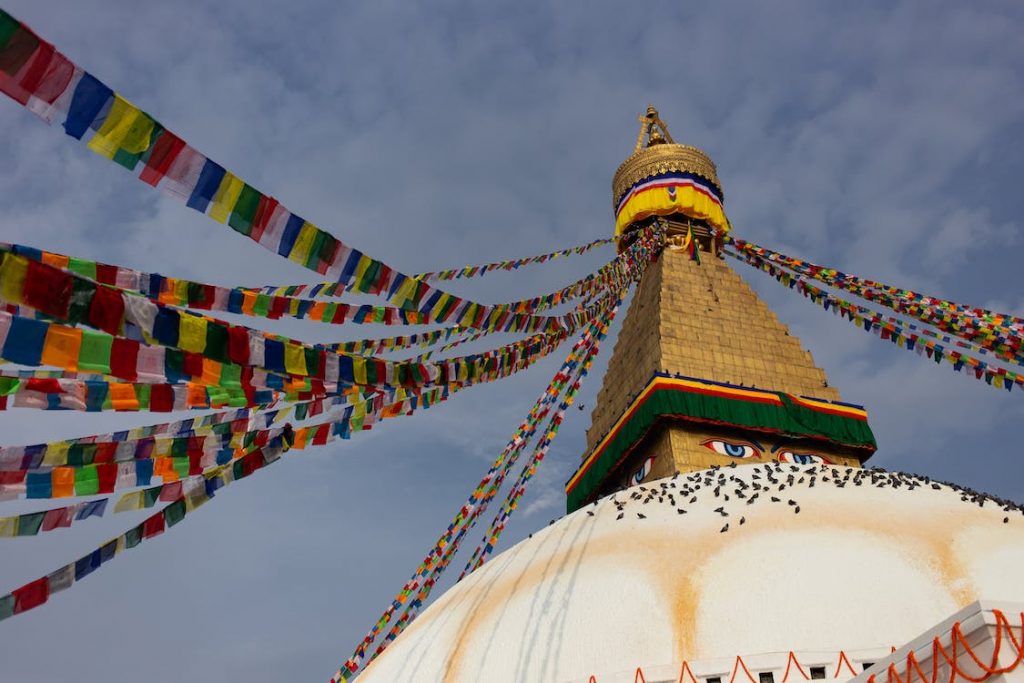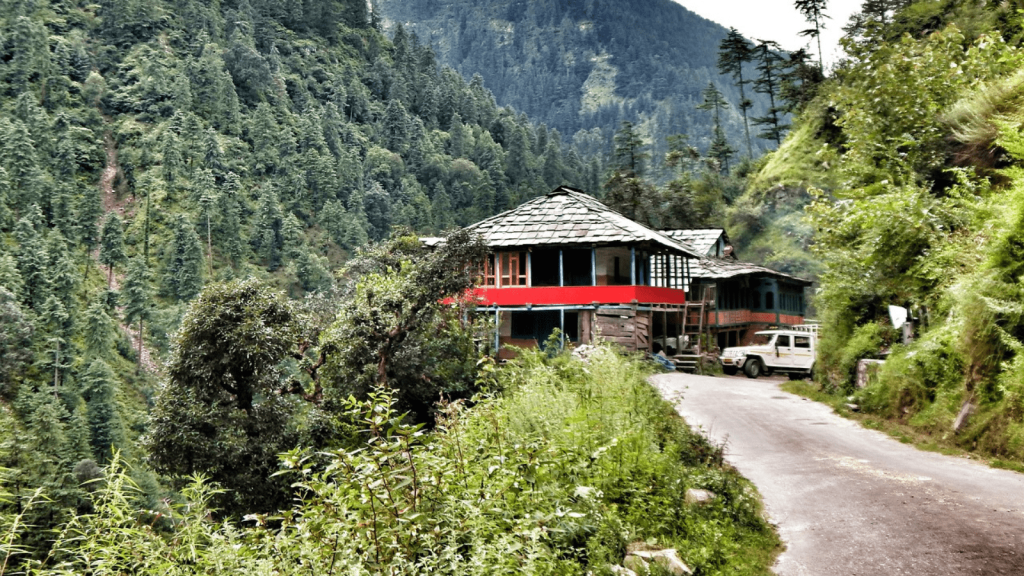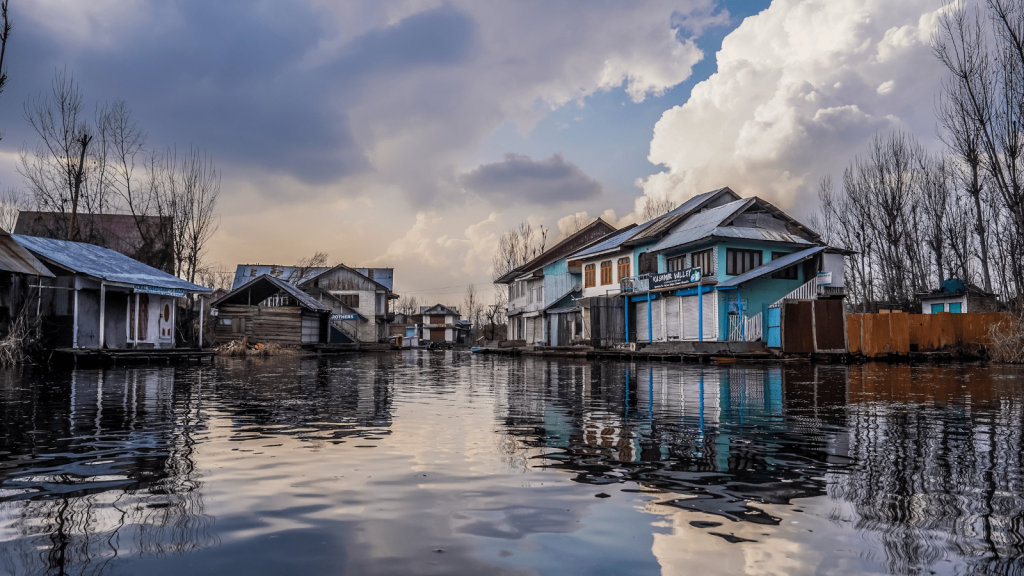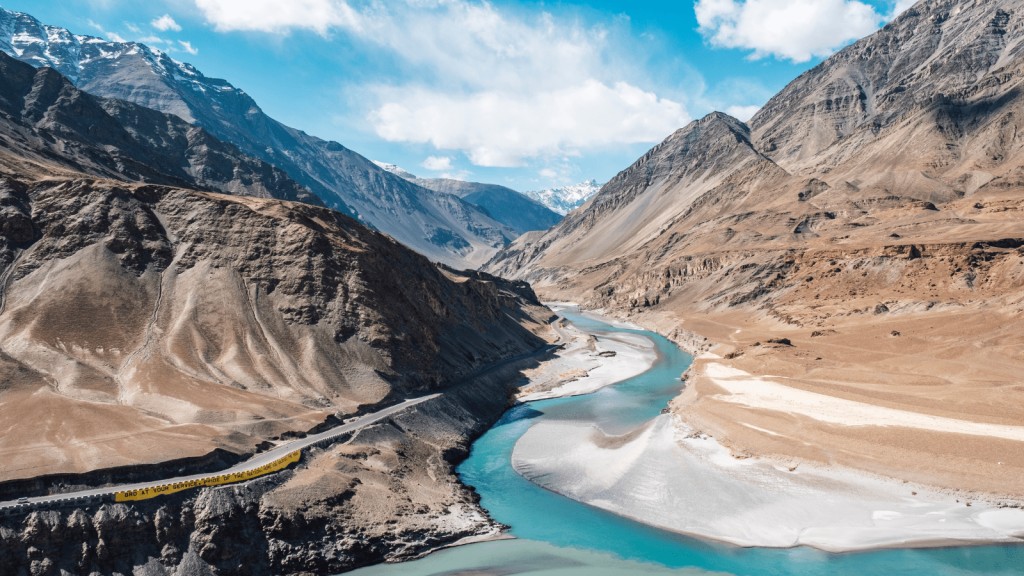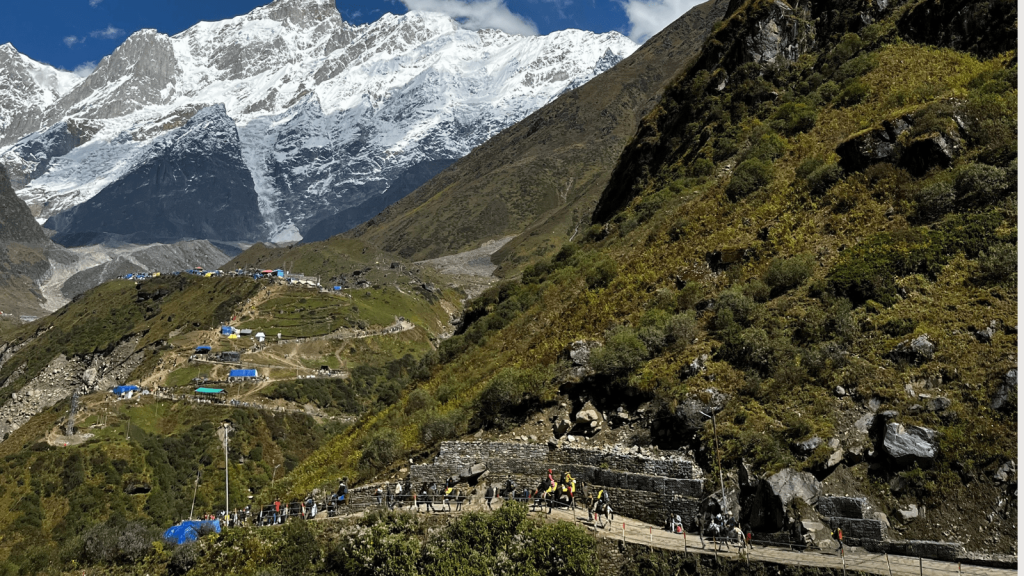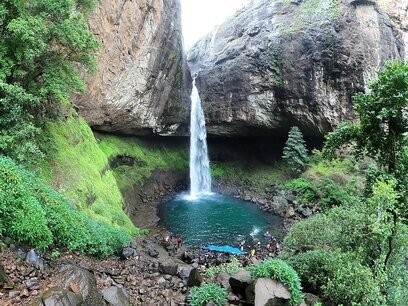Nepal Lumbini Birthplace of the Buddha
Nepal is home to the ancient city of Lumbini, which is the birthplace of the Buddha. The city is located in the foothills of the Himalayas, and it is a sacred site for Buddhists all over the world. Every year, pilgrims from all over Nepal and India come to Lumbini to pay homage to the Buddha. The city is also home to a number of historical and religious sites, which makes it a popular tourist destination.
Birthplace of The Buddha, who crosses the riddle of the ocean of existence, who shows the path of emancipation, who is the symbol of peace and compassion.-Mahaparinirvana Sutra
Lumbini is the place where Prince Siddhartha, known as Buddha, was born. It is said that here the newly born Prince took his first seven steps and uttered an epoch-making message to suffering humanity. This happened in a beautiful sal grove, which is now the focal point of the Lumbini Garden area.
Maya Devi, the queen of Shakya King Suddhodhana of Kapilvastu, while passing through the Lumbini Garden on the day of "Vaisakha Poornima" (Full Moon Day of May, 623 B.C.), took a bath in the Pushkarini (the Sacred Pond), and soon after she took the support of a tree branch, gave birth to the Crown Prince Siddhartha, who became Buddha. The Lumbini Garden covers an area of 1 x 3 sq. miles (2.56 sq. km) and encompasses three zones, each covering one square mile, connected by walkways and a canal. The area has a subtropical monsoon climate with a warm wet season.
ENLIGHTENMENT
On a full-moon day in May, he sat under the Bodhi tree in deep meditation and said "I will not leave this spot until I find an end to suffering." During the night, he was visited by Mara, the evil one, who tried to tempt him away from his virtuous path. First, he sent his beautiful daughters to lure Siddhartha into temptation.
Next, he sent bolts of lightning, wind, and heavy rain. Last, he sent his demonic armies with weapons and flaming rocks. One by one, Siddhartha, concentrating on his goal, met the troops and defeated them with his virtue.
As the struggle ended, he realised the cause of the suit and how to remove it. He had gained supreme wisdom and understood things as they indeed are. He became the Buddha, 'The Awakened One. From then on, he was called Shakyamuni Buddha.
In his fire mon, given at the Deer Park in Sarnath, Buddha elucidated the Four Noble Truths: the world is full of suffering; there is a cause for every suffering; suffering can be ceased or significantly reduced; and the ultimate goal for attainment is enlightenment, which can be realised by following the noble eight-fold path.
NOBLE EIGHT-FOLD PATH
As per Buddha's teachings, by following the noble eight-fold path, the cause of the suffering can be ascertained, the constraints of the mind be broken, and the path of liberation can be achieved. The stages of the eightfold path are: right views, right aspiration, right speech, right action, right livelihood, right effort, right meditation, and right mindfulness. He stressed the Middle Path as embodied in the noble eight-fold path, shunning either extreme asceticism or indulgences in the desire of the body.
The way of Buddha is selfless service to humanity through the path of compassion. He kept silent on the existence of God. He taught that all phenomena, including beings, are in a constant state of flux—always changing, always becoming, constantly dying, and each thought-moment conditions the next thought-moment. When the bodies die, the so-called beings have the power to regenerate and take a new form.
He also believed that through the power of meditation, it is possible to see things as they are and get freedom from the fetters of the mind, which is the root cause of all the suffering in the world.
Lumbini Rediscovered
The history of Lumbini was re-established with the visit of the Mauryan Emperor Ashoka, who made a pilgrimage in 249 B.C. and erected a stone pillar bearing an inscription stating "Hida Budhe Jate Shakyamuniti", which means that Shakyamuni Buddha was born here. After his visit, structural activities started to mark the birthplace of the Lord Buddha. He worshipped the nativity tree, and the bathing pond and also visited other surrounding historical sites such as Kapilavastu Ramagrama and Niglihawa.
Later on, three famous Chinese pilgrims—Tseng Tsai (4th century A.D.), Fa-Hien (4th century A.D.), and Hiuen Tsang (5th century A.D.)—visited Lumbini. Hiuen Tsang's travel account gives a detailed description of the area, including the Ashoka Pillar, with a horse carved on the top of it.
King Ripu Malla (1312 A.D.) of Karnali, marked his visit with an engraving on the Ashoka Pillar. After the 14th century A.D., the sites were forgotten, neglected, and shrouded in bushes. For almost 600 years, people slowly forgot that Lumbini was where the Buddha was born. The name of the district changed from Lumbini to Rummindei and then to Rupandehi, which is what it is called now.
In the course of an archaeological survey in 1896, General Khadga Shamsher Rana and Dr. Alois Fuhrer discovered the Ashoka Pillar in Lumbini. In the 1930s, General Kaiser SJB Rana carried out a large-scale excavation at Lumbini. Lumbini's most important archaeological discoveries are:
- Buddha's nativity.
- The gold casket.
- Charred human bones.
- The terracotta sculpture of a Bodhisattva and the marker stone
In 1956, on the occasion of the fourth world Buddhist conference, the late King Mahendra visited Lumbini and wanted to improve it. Further, the pilgrimage of the then-UN Secretary.
General U. Thant proved a milestone in the modern history of Lumbini. Deeply influenced by Lumbini's sanctity, U. Thant wanted the government of Nepal to develop Lumbini as an international pilgrimage and tourist center. In 1970, Prof. Kenzo Tange of Japan was assigned to create the Lumbini Master Plan, which the government approved in 1978. In 1985, the Lumbini Development Trust (LDT) was established to take over the responsibility of Lumbini's overall management and development.
-
STROLLING AROUND
THE LUMBINI GARDEN
Some of the details of the Lumbini Master Plan developed by Prof.
Tange is still in the process of completion. The Master Plan includes canals, gardens, a library, a museum, monastic zones, and areas for amenities. The Central Link, which is a 1.5 km long canal corridor with two brick walkways on either side, connects the two areas. It is meant to help people get ready for their trip to the Sacred Garden and the monasteries.
- a) WALK AROUND THE LUMBINI CULTURAL SITE
Your visit can start at the Lumbini Museum, which displays ancient coins, religious manuscripts, terracotta fragments, and stone and metal sculptures. On the other side, you will see the Lumbini International Research Institute, a peculiar architectural design that provides research facilities for studying Buddhism and other religions and contains over 30,000 books on religion, philosophy, art, and architecture.
Besides, there is Peace Hall (Auditorium), Archaeological Office, high school complex, boat station, Lumbini Square, Symbolic Pavilion, and Camping Ground, all of which are yet to be completed. Passing through the Friendship Bridge, the symbol of coexistence, one will enter the Monastie Enclaves, bisected by the proposed Central Link, where there = 42 plots allotted for new monasteries of Theravada and Mahayana sects of Buddhism. To the east, 10 out of 13 monasteries have been constructed, and to the west, 22 out of 29.
- b) WALK THROUGH THERAVADA MONASTIC ZONE
This route enters the Eastern Lane of the Theravada Monastic.
crossing the Thai Monastery and Stupas, built by the Government of Thailand. The architectural design is typical of Thai environs. Thereafter, one will pass a monastery constructed by the Maha Bodhi Society of Kolkatta, India; neighbouring is one built by the Buddhist Society of West Bengal, India.
One will pass the Burma Temple and the Monastery, built by the government of Myanmar. Next, one passes the Sri Lankan Monastery, constructed by the Government of Sri Lanka, followed by one built by the International Gautami Nun Society, Nepal—a typical monastery replicated from Swayambhu, with the Buddhist philosophy of 13 steps to Nirvana and three pinnacle stages.
One can enter the Nepal Vipassana Center and practise meditation techniques. Other monasteries also provide meditation practice. Further information can be sought from the Tourist Information Center nearby. After the serenity of the spiritual atmosphere, one will enter the Sacred Garden after passing the symbol of peace and prosperity of human existence—the Eternal Peace Flame.
- c) STROLLING AROUND THE SACRED GARDEN
This garden is the heart of Prof. Tange's design. The ultimate objective of the plan, to create an atmosphere of spirituality, peace, universal brotherhood, and non-violence consistent with Lord Buddha's message to the world. The zone shelters ancient monuments in a freshly restored atmosphere. The Maya Devi Temple is the heart of all the monuments at this holy site.
The temple complex bears the testimony of several construction phases over the centuries. It was fully restored and reopened in 2003 during the celebration of the 2547th auspicious birth anniversary of Lord Buddha. Inside the temple, there are remains of structures of the early Maya Devi Temp that date back to the 3rd century B.C. to the 7th century A.D.
THE NATIVITY SCULPTURE
The shrine of Maya Devi depicts Queen Maya Devi grasping a tree branch with her right hand. Next to her is standing Gautami Prajapati, her sister, in a supporting posture at the time of delivery. The far right shows figures of Brahma and Indra, wearing conical crowns, standing in devotion before the queen to receive the divine child, as narrated by Buddhist literature.
At the bottom of the panes is the newly born Prince Gautam (Buddha) with a halo around his head, standing upright on a lotus pedestal with two celestial figures receiving him.
THE MARKER STONE
The conglomerate located deeply buried in the sanctum pinpoints the
The spot of the auspicious birth of Lord Buddha. This was discovered after a meticulous excavation of the Maya Devi Terole in 1996. The Marker Stone, 70 x 40 x10 cm, is now preserved with a covering of bulletproof glass.
PUSHKARINI
It is believed to be the most sacred pond of the Shakyas in which Maya Devi took her bath before giving birth to Prince Buddha. It is also where the infant Buddha was given his first purification bath. The pond has two deep wells and terraced steps and is riveted by beautifully layered bricks from 1933–39.
ASHOKA PILLAR
It is important evidence of the birthplace of Buddha. The inscription engraved by Ashoka is still intact and testifies to the authenticity of the birthplace. The text, written in Brahmin script, records the visit of King Priyadarsi, who ordered structures built to protect the site.
One can also see the brick masonry foundations, known as the GROUP OF STUPAS and vihars, built in the period of Mauryan Gupta and Kushana (between the 3rd century B.C. and the 2nd century A.D.), which are evidence of the early devotee's desire to be near the sacred birthplace.
On the back side, one can view a brick pillar known as MAHENDRA STAMBHA, erected around the 1970s to commemorate the initiative of U. Thant and King Mahendra. On the eastern side, two monasteries, Lumbini Buddhist Monastery (the Hinayana Buddhist sect), built in 1953, and Dharma Swami Maharaj Buddhist Monastery (the Mahayana Buddhist sect), built in 1968.
- d) WALK THROUGH THE WESTERN LANE (MAHAYANA) MONASTIC ZONE
One can witness the later development of Buddhism in the Mahayana, Bajrayana, and Lamaism Buddhist sects. Exiting through the Shanti Deep, one will pass the Panditaram Meditation Center. Continuing on, the Western Lane bisects the south and north Monastic Zones.
The first major site is the Dharmodaya Sabha, a typical Nepali-style monastery with a bahal (holy courtyard), a gumba (monastery), and a stupa. On the continuation of the southern lane is Manang Stupa, built by the Manang Buddhists of Nepal, typical of the Tibetan Buddhist style. Further is the Korean Monastery and a monastery guest house.
Leading to the northern complex, one will see the China Temple (the Chinese Monastery), with typical architecture from Tinanmen Square, Beijing. Further is the Vietnamese monastery, typical of Vietnam. On the way, there are French and Austrian monasteries and a guest house for meditation practice. To the north is the Japanese Monastery. Adjacent is the Ladakh Monastery, built by Buddhists from Ladakh, India.
Nearby are two German monasteries.
The last monastery, located at the north end, is proposed for construction by Nep Buddhists. Plots have also been allotted to Buddhist groups from Austria, Mongolia, Malaysia, and Bhutan.
- e) STROLL AROUND THE NEW LUMBINI VILLAGE
The northern part of the Master Plan has been designed as the gateway to the outer world and amenities for the visitors to find comfortable lodges, restaurants, and camping facilities.
The first feature of this garden is the World Peace Stupa.
On the western side is the Crane Sanctuary and Wetland Garden, established by the International Crane Foundation.
(USA), in collaboration with the Lumbini Crane Conservation Center and LDT. The forest and wetland harbour 200 blue bulls and 300 bird species. The southern part offers a camping ground. The eastern side has the Lumbini Hokke Hotel, with distinctive Japanese hospitality.
Another hotel, Mikassa, was jointly constructed by a Japanese organisation and the Government of Sri Lanka. The Nepal Council for the Preservation of Buddhist Religion, in the east zone of the highway, displays the Thangka Exhibition.

